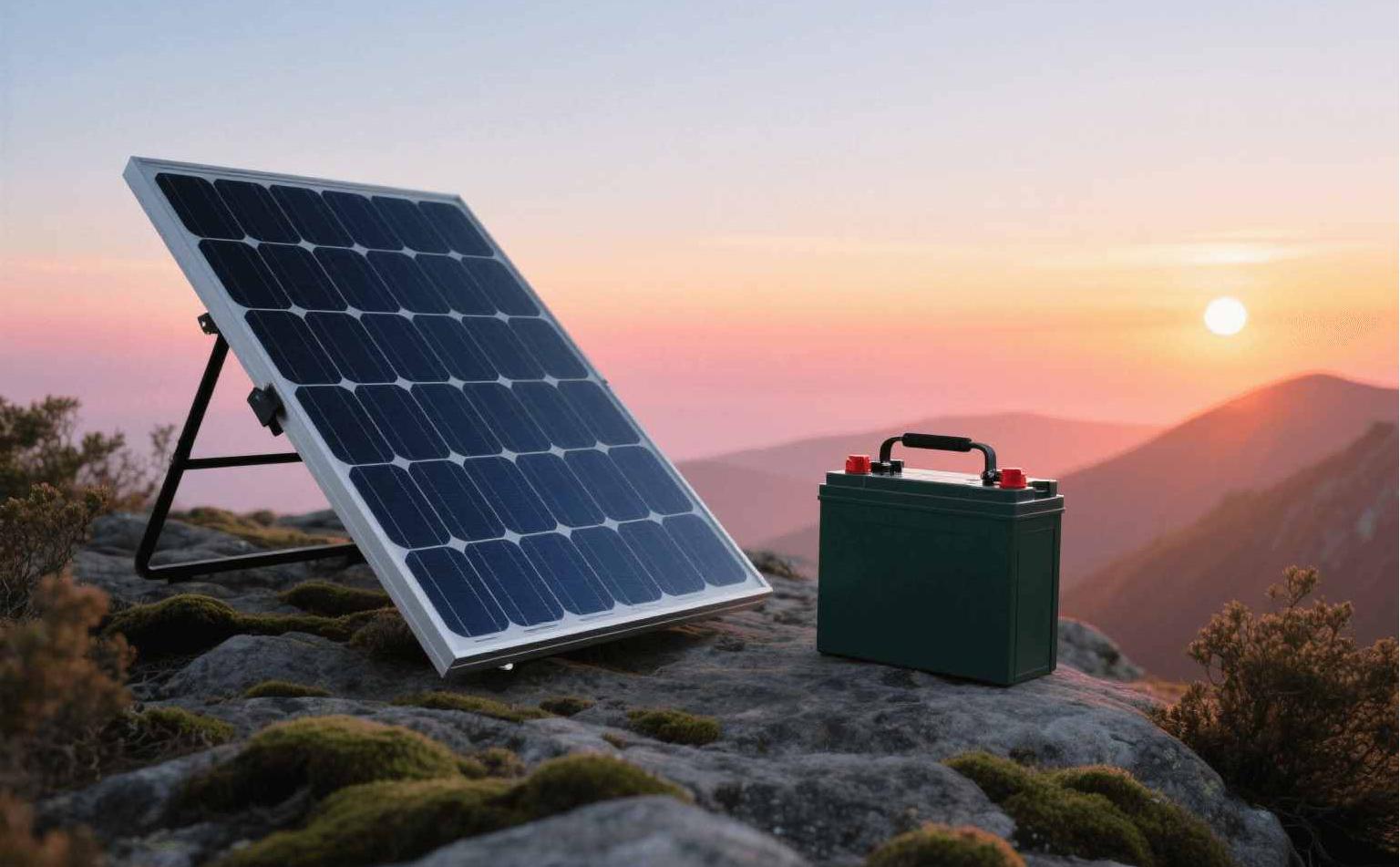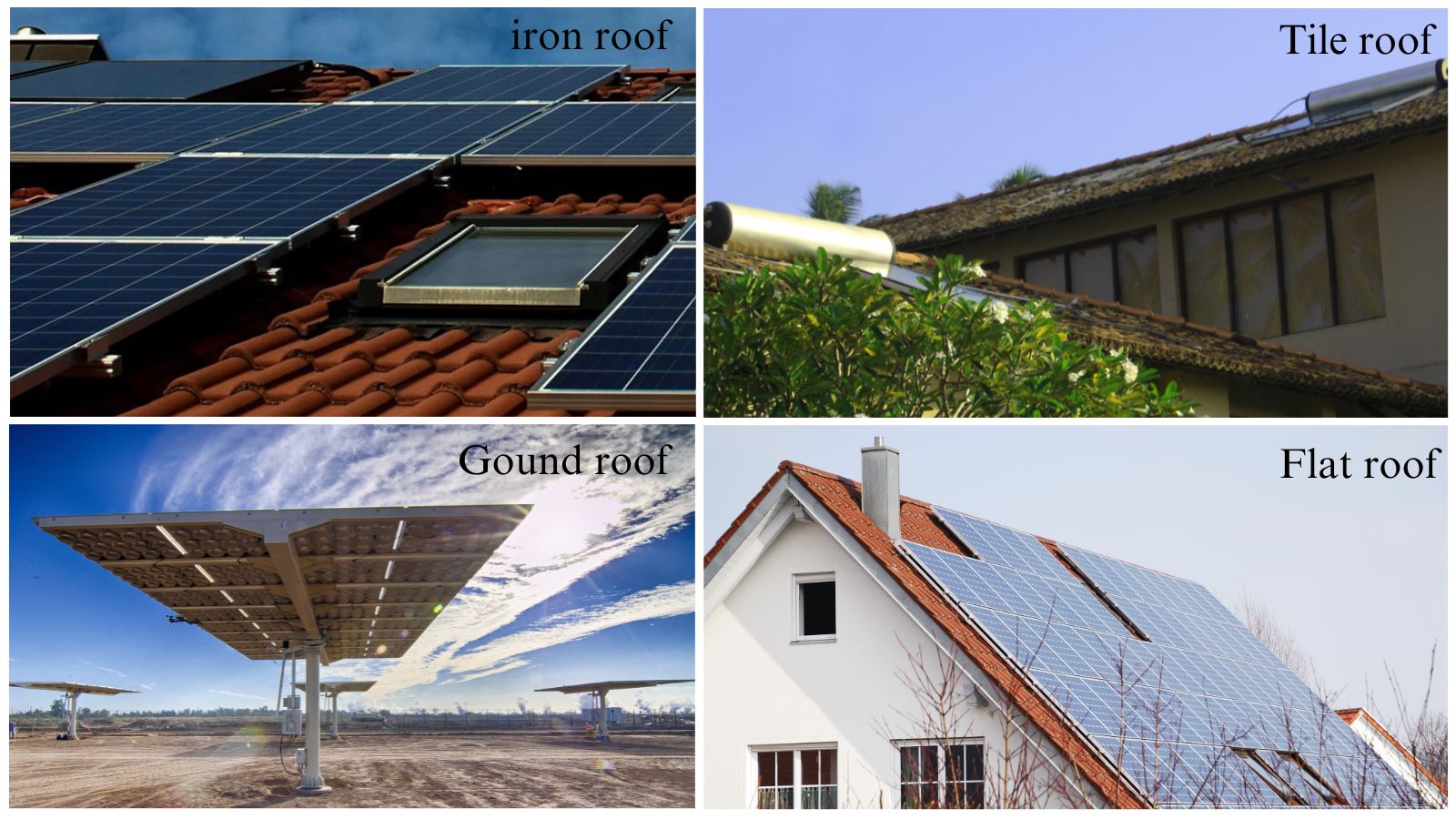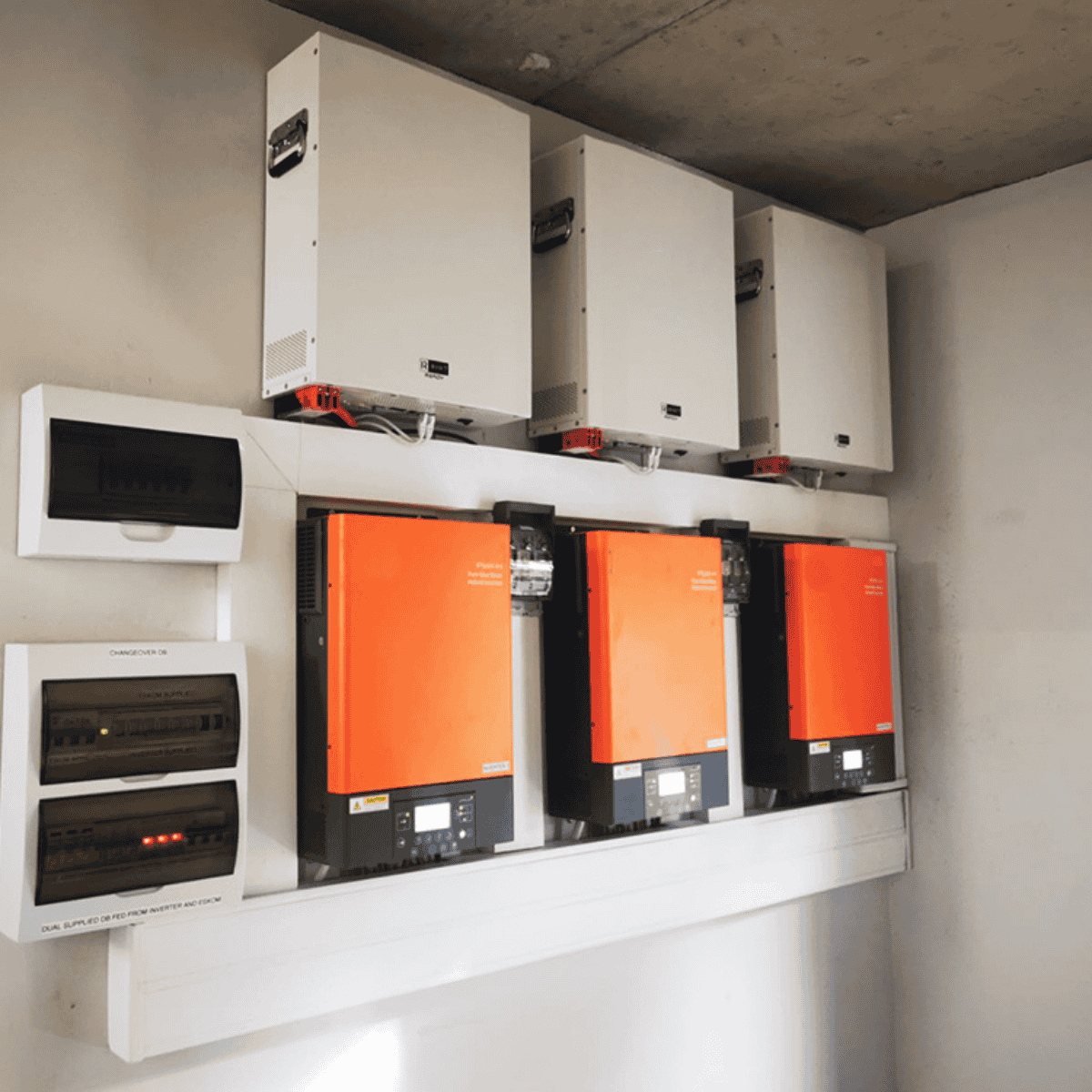Connecting solar panels to a battery is a smart way to generate clean, free and sustainable electricity for homes, companies, industries. If you have a plan to buy it and wonder how to connect them together, you are in a right place! This guide will show you the basics, how to connect solar panels to a battery, how to maintain efficiency. Understanding these steps is vital, as improper connections can lead to inefficiency or damage. Finally ensure you have a smooth and efficient solar power setup through this article.

Before formally connecting the solar panels to a battery, understanding how they work will give us a clearer mind of what we need to do next.
When you connect solar panels to a battery, you're harnessing renewable energy to power your devices or charge the battery itself. Solar energy is converted into electricity via photovoltaic cells in the panels.
Then this electricity flows through a charge controller, which regulates voltage and current, safeguarding battery safety by preventing overcharging. Finally you could use it to charge your electronic appliances safely.
Understanding the charging process is essential; for instance, a 100-watt panel can maintain a typical 12V battery under ideal sunlight. Do you know this before?
If you think any solar panel can be connected to a battery, you're mistaken because not all solar panels are compatible with batteries. Consider the type of panel that best suits your needs, such as monocrystalline or polycrystalline.

Choosing the right type of solar panel is essential for effective battery charging, as different panel technologies offer varying efficiencies and performance characteristics.
The primary solar panel types are monocrystalline, polycrystalline, and thin-film.
When selecting a solar panel, consider your battery capacity and the desired charging speed. Moreover, it's vital to match the solar panel's power output to your battery's capacity to guarantee efficient charging; for instance, a 100Ah battery usually requires around 120 watts for peak performance. To achieve this, consider your battery's amp-hour (Ah) rating and the desired charging speed.
The components for charging a battery with solar panels include solar panels, charge controllers, batteries, and inverters (optional).
Understanding each component is vital for effective solar panel installation and battery maintenance.
Having these components is the first but a vital step to know how to connect solar panels to a battery.
As our topic makes clear, in the process of connecting solar panels to a battery, battery is a critical component of the system that cannot be overlooked. Types of the battery directly affects the system's operational efficiency and lifespan. There are several types of batteries, and I'm sure you're familiar with them.

When you search battery online, you will find that lead-acid batteries or lithium-iron batteries are common recommended answers. While you consider the best battery options for solar panel charging, understanding the differences between lead-acid and lithium-ion batteries will be helpful.
When selecting between these two, consider battery compatibility with your solar system, discharge rates, and the long-term cost implications.
Deep cycle batteries are also vital for solar panel charging, as they're specifically designed to provide sustained power over extended periods. Unlike standard batteries, deep cycle batteries can be discharged and recharged repeatedly without significant damage.
Just like lithium-ion deep cycle batteries, it offers longer life cycles and faster charging times, making them a popular choice despite higher costs.
By now, I trust you've gained a solid understanding of how it works and its key components. So let's dive into today's main topic: Connect solar panels to a battery.
Connecting solar panels to a battery using a charge controller is essential for guaranteeing safe and efficient charging. The charge controller regulates voltage and current, preventing overcharging and enhancing solar panel efficiency.
Follow these steps:
Using the right charge controller maximizes solar panel efficiency and extends battery life, giving you better control over your solar power system.
These are some tips if you charge a battery without a charge controller. But it is not recommend you do that. BECAUSE charge controller can regulate voltage and current, safeguarding battery safety by preventing overcharging. Without it could lead to overcharging and then damage the battery, which reducing the lifespan of whole system.
Monitoring and maintaining a solar battery charging system is vital for ensuring peak performance and longevity of both the solar panels and the battery.
Regularly inspecting your solar panels for dirt or debris, as this can impede energy absorption. Clean the panels as needed to enhance solar panel maintenance. Next, check all connections for signs of wear or corrosion, ensuring secure connections for efficient energy transfer.
Monitor battery health by using a charge controller with a display to keep track of charge levels.
Implement these practices to maintain peak performance, extend battery life, and enhance your solar energy system's reliability.
When charging a battery with solar panels, you may encounter some issues, which is normal. Below, I'll summarize some issues you might face and provide some tips for you.
Slow charging or even no charging is frequent issue when connecting solar panels to a battery, which can be encountered during charging. There are several factors can lead to slow or no charging.
If your solar panel is also charging slowly or not at all, you can troubleshoot the issue step by step based on the problems listed above, then address each problem specifically.
Overcharging the battery is a significant risk when charging with solar panels to a battery, particularly if you don't use a charge controller or using solar panels beyond the battery's capacity, whom excess voltage can lead to battery swelling or leakage, severely compromising battery health.
Please keep in mind, if you want to maintain control over your solar setup, always incorporate a reliable charge controller into your system. This not only safeguards your battery but also prolongs its lifespan, guaranteeing a more efficient, sustainable energy solution.
If your battery is draining too quickly despite being charged with solar panels, it is time to check you solar panels charging system. Have you also encountered the following issues during your battery charging process?
If the answers are yes, addressing these areas can greatly improve your battery's lifespan and charging efficiency. If the budget allows, integrating a Battery Management System (BMS) with a battery monitor can also provide enhanced oversight of battery health and deliver greater benefits.
Pay attention! Regular battery maintenance, like cleaning terminals and checking connections, also is essential.
While many energy solutions come with high ongoing costs, utilizing solar panels to a battery offers considerable savings over time. By leveraging solar energy, you minimize reliance on traditional power sources, reducing your electricity bills markedly. Although the initial cost of solar battery banks is high, it’s worth it in the long run.
Implementing battery maintenance tips, like regular inspections and using a charge controller, also enhances longevity and efficiency.
Utilizing solar panels to charge batteries not only leads to significant cost savings but also supports eco-friendly and sustainable energy practices. Connecting solar panels to a battery can generate clean and high-efficiency energy. By harnessing renewable resources, you're reducing reliance on fossil fuels and minimizing your carbon footprint.
Moreover, for some countries, there are some solar incentives in local department, such as tax credits and rebates, further enhance the financial benefits of converting to solar energy. But it is depends on your local regulations.
Further, when you connect solar panels to a battery, you gain the ability to store energy for later use, ensuring a consistent power supply while promoting sustainability.
This approach empowers you to take control of your energy consumption, reduce long-term costs, and contribute to a cleaner environment.
How much does it cost to connect solar panels to a battery? I guess, this question may be one of your most pressing concerns after reading today's article.
Honestly speaking, the total cost can vary greatly based on several factors, including the type of solar panels, battery capacity, and installation fees.
Here’s a cost breakdown to evaluate:
The estimated cost breakdown here is based on comprehensive market research and is for reference only.
Understanding these costs helps you budget effectively for your solar energy system, ensuring you achieve the control and efficiency you desire.
Briefly speaking, charging time for a battery with a solar panel depends on wattage, battery capacity, and sunlight conditions.
A higher wattage solar panel can greatly enhance solar panel efficiency, directly impacting battery charging speed. For instance, a 100-watt panel charging a 100Ah battery under ideal sunlight may take around ten hours to reach a full charge.
However, this time can vary based on the battery's chemistry—lithium-ion batteries typically charge faster than lead-acid ones.
Additionally, using an MPPT charge controller can optimize energy transfer, further improving both efficiency and charging speed, allowing you to maximize your solar setup's potential.
In the end of this article, we are going to tell about last but not least one question: how to extend battery life when charging?
Maximizing the lifespan of your battery while charging with solar panels involves implementing several best practices.
Prioritize battery maintenance by regularly checking electrolyte levels and cleaning terminals to prevent corrosion. And then, as we mentioned before, use a high-quality solar charge controller, preferably an MPPT type, to enhance charging efficiency and prevent overcharging.
Schedule charging sessions during peak sunlight hours to avoid prolonged low voltage scenarios, which can degrade battery health. Monitor the battery's state of charge and avoid complete discharges, as this greatly shortens lifespan.
Finally, implementing temperature control measures can also protect against extreme conditions. By following these guidelines, you not only extend your battery's life but also guarantee efficient charging, ultimately improving the overall performance of your solar power system.
As you commence your solar energy journey, Leappower stands ready to provide you with extensive assistance tailored to your specific needs.
We focus on enhancing your solar panel efficiency while ensuring ideal battery maintenance. Our expert guidance will empower you to make informed decisions for your solar system.
At leapPower, we provides solar battery, off-grid/on-grid solar power system and solar panels to a battery that prepared to meet your needs.
With Leappower by your side, you'll gain the control and knowledge necessary to maximize your solar energy investment effectively.
We're here to help you succeed!
Connecting solar panels to a battery might seem intimidating, but with the right components and careful attention to details, it’s manageable. You might worry about complexity, but following a clear, step-by-step guide simplifies the process. By investing time to set up your system correctly, you’ll enjoy reliable energy and prolong your battery’s life. Embrace the benefits of solar energy; not only does it reduce costs, but it also fosters environmental sustainability for the future.
Absolutely, you can connect multiple batteries to one solar panel using a parallel connection! Just guarantee their battery capacities match, allowing for efficient charging and maximizing your energy storage potential without overwhelming the system.
When connecting solar panels, make certain you use proper wiring techniques and install fuses to protect against short circuits. Regularly inspect connections and maintain equipment to prevent hazards and guarantee peak performance of your solar system.
Weather conditions greatly affect solar panel charging. Reduced sunlight intensity due to cloud cover decreases energy production, impacting battery charging efficiency.
Yes, you can use solar panels for charging during winter, but expect reduced solar output. For example, a panel may only achieve 50% winter efficiency compared to summer, so adjust your expectations accordingly.
To connect solar panels to a battery, you’ll need appropriate cables, a charge controller, and tools like a multi-meter. Consider your battery capacity and choose compatible solar panel types for maximum charging efficiency.


"We strive to deliver real value for our customers through distinctive design, superb quality and excellent customer service at prices that reflect the real worth of our products."
---Emmy Zheng, Author



